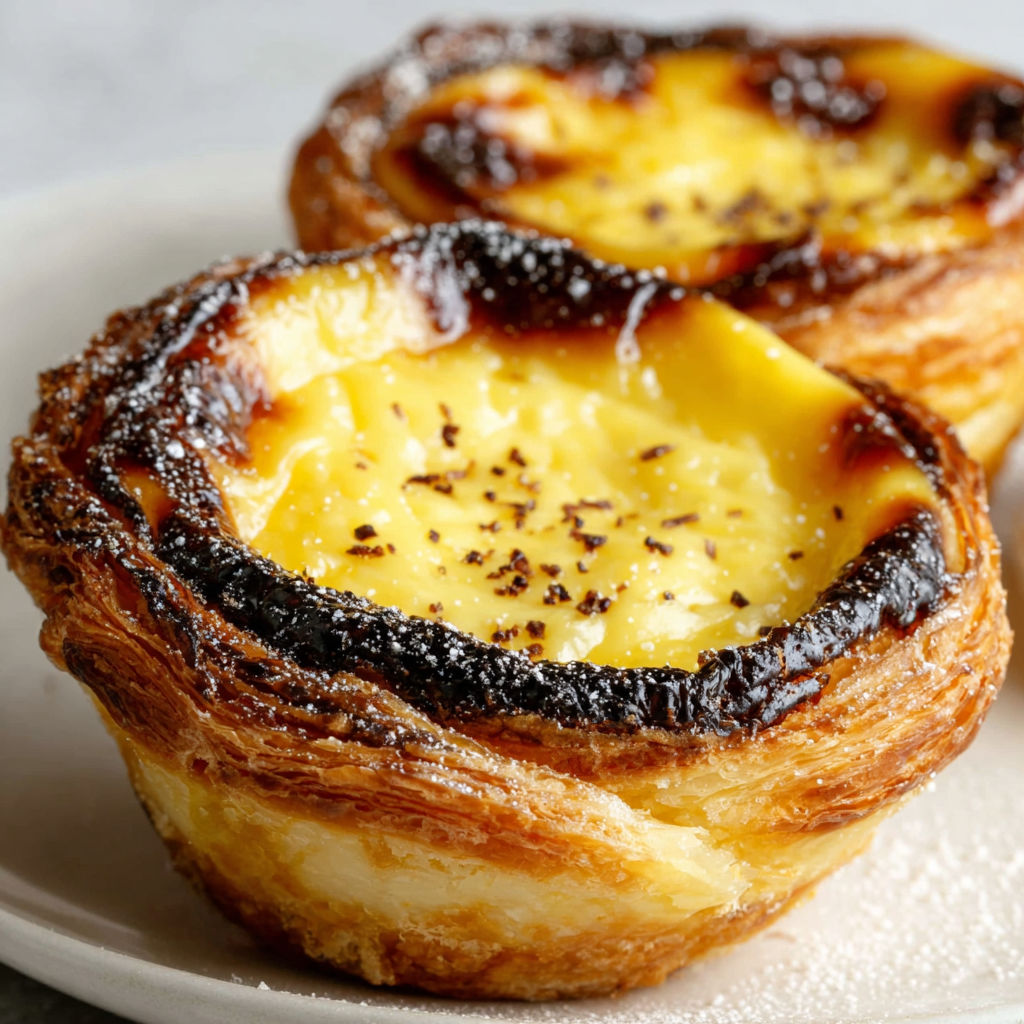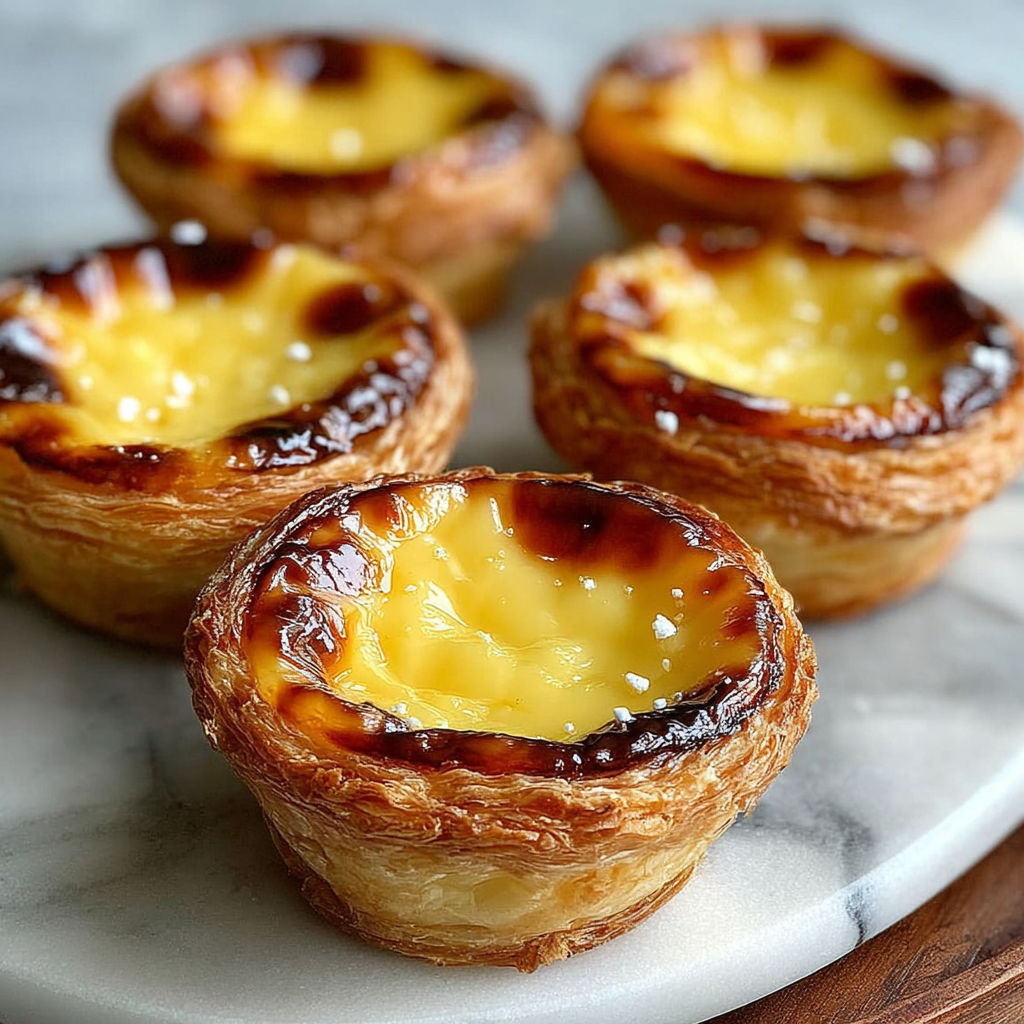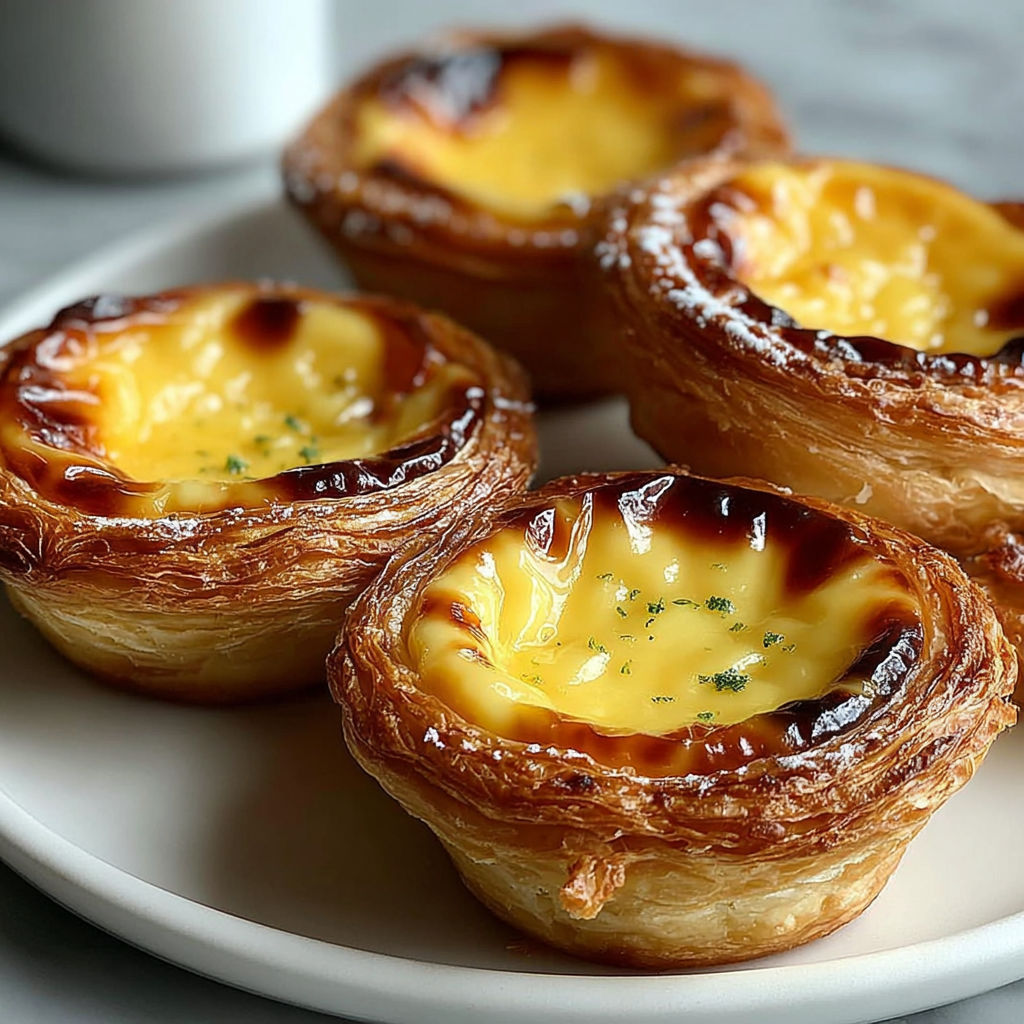 Save
Save
Pastel de Nata are classic Portuguese custard tarts featuring crisp flaky pastry and creamy vanilla-infused filling. They are a beloved street food in Lisbon and learning to bake them at home is a treat worth the effort. Whether dusted with cinnamon or eaten fresh from the oven, they turn any day into something special.
I first tasted pastel de nata on a rainy morning in Porto and immediately set out to learn the recipe. After many attempts this version made my kitchen smell exactly like the pastry shops I remember.
Gather Your Ingredients
- Frozen puff pastry: Makes this recipe fast and ensures buttery flaky layers. Choose all-butter pastry for best flavor.
- All-purpose flour: Helps thicken the custard so it sets with a creamy soft texture without being runny. Use fresh flour for smooth results.
- Whole milk: Gives the custard richness. Avoid low-fat milk as it will not yield the same silkiness.
- Granulated sugar: Sweetens and helps caramelize the surface. Fine textured sugar dissolves easily.
- Cinnamon stick and fresh lemon peel: Infuse the custard with delicate warmth and brightness. Choose unwaxed lemons and peel off only the yellow part.
- Egg yolks: Provide signature richness and gold color. Use fresh eggs for the creamiest custard.
- Ground cinnamon and powdered sugar: Dusted on at serving for the traditional finish.
How to Make It
- Prepare the Puff Pastry:
- Roll out thawed puff pastry on a lightly floured surface into a thin rectangle. Roll it up tightly from the short end like a jelly roll. Slice into twelve equal pieces.
- Form the Tart Shells:
- Place each pastry piece cut-side down in a muffin pan cup. Press and stretch with your thumbs to cover the base and sides thinly and evenly.
- Make the Custard Base:
- In a saucepan, whisk together sugar, flour, and a splash of milk to a smooth paste. Add the rest of the milk plus cinnamon stick and lemon peel. Cook over medium whisking constantly until the mixture just simmers and thickens lightly.
- Steep the Flavors:
- Remove the pan from heat and let the mixture steep for ten minutes.
- Combine with Egg Yolks:
- In a separate bowl, whisk egg yolks until smooth. Remove the lemon peel and cinnamon stick from the milk mixture. Slowly pour the warm mixture into the yolks while whisking to prevent scrambling.
- Strain and Cool the Custard:
- Pour the custard through a fine mesh strainer into another bowl for a completely smooth texture. Let cool slightly before filling.
- Preheat and Fill:
- Preheat your oven to its highest setting at least five hundred degrees Fahrenheit. Pour custard into each pastry shell filling them about three-quarters full.
- Bake to Perfection:
- Bake for twelve to fifteen minutes until the pastry is puffed and deeply golden and the custard is blistered on top with some charred black spots.
- Cool and Serve:
- Let the tarts rest in the tin for five minutes, then remove to a wire rack. Optionally dust with cinnamon and powdered sugar before serving.

The cinnamon stick gives spicy depth that reminds me of my grandmother’s kitchen and the scent alone draws everyone to the table. Lemon peel in the custard transforms the flavor into pure sunshine and brings back summer afternoons in Lisbon.
Flavor Boosters
Let tarts cool completely before storing in an airtight container. They keep well at room temperature for up to twenty-four hours or can be refrigerated for two days. For crispiness, reheat in a hot oven for five minutes before eating.
Serving Suggestions
Serve pastel de nata warm with a sprinkle of cinnamon and powdered sugar. They pair beautifully with strong coffee or black tea. For a fun twist serve alongside fresh berries or a dollop of whipped cream.
Creative Twists
If you cannot find all-butter puff pastry you can use regular store-bought pastry but the flavor will be milder. For a dairy-free version try using a rich unsweetened plant-based milk and vegan pastry but expect texture and taste will change. Orange peel can stand in for lemon in a pinch.

Letting the cooked milk mixture steep before whisking into the yolks is crucial for deep flavor. Use a light touch pressing the pastry so you get lots of flaky layers. Do not fear the charred spots on top – these are the authentic hallmark of pastel de nata.
Recipe FAQs
- → What gives Pastel de Nata its unique flavor?
Lemon peel and a cinnamon stick infuse the custard, adding vibrance and warmth.
- → How do you achieve the signature blistered top?
Baking at a very high temperature creates the classic blistered, caramelized custard surface.
- → Can frozen puff pastry be used?
Yes, store-bought frozen puff pastry saves time and produces a deliciously flaky base.
- → Is it necessary to strain the custard filling?
Straining ensures a silky-smooth filling, yielding a delicate texture in each bite.
- → What is the best way to serve these tarts?
Serve warm or at room temperature, with a sprinkle of cinnamon or powdered sugar if desired.
